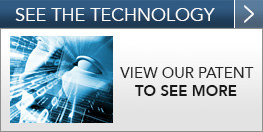Q: What is the essence of the Prima Research technology?
A: A network of receivers is arranged to encompass a three-dimensional space to be observed. Then a specific space (or spaces) is mathematically defined within the system so as to determine whether specific observed RF emitting devices (e.g. cell phones, wifi devices, RFID tags, etc.) are absolutely inside or absolutely outside the boundaries of the defined spaces. Devices within a space can be counted, have their paths recorded over time, and have their presence, location, velocity, etc. trigger actions in other systems and subsystems..
Q: What sort of device can be observed in a space?
A: Any device that emits a radio signal including cell phones, wifi-enabled devices, RFID tags, or purpose-specific broadcasting devices.
Q: Can the Prima Research methods be used indoors?
A: Yes. Because the network of receivers is arranged locally, it can be installed within the space to be observed. This allows observation in environments that are difficult or impossible to observe using other methods, such as within “hardened” facilities or spaces that include obstacles that bounce or otherwise interfere with radio signals. An extreme example of this might be a network designed to observe mine tunnels miles below the surface of the earth and well beyond reach of external observation points.
Q: Does the Prima Research method require fixed observation points?
A: No. The network comprised by observation points can be in motion enabling mobile, even momentary, implementations.
Q: Does Prima Research make the systems that incorporate the methods they invented?
A: No. We develop methods and inventions that address unsolved technological challenges. We intend to license our inventions to those with sufficient resources and market access to deliver implementations of our methods.
Q: Is Prima Research a patent “troll”?
A: No. Prima has developed a working model of our system. We plan to work with technology leaders who can bring the Prima Research solution to the commercial marketplace.
Q: Can the Prima Research methods be detected by external systems?
A: Not usually. Most implementations of the Prima Research methods would consist of only networked radio receivers. There would be no network generated radio signals to observe.
Q: Does any special software or apps need to be installed on devices to be observed?
A: No. One of the great advantages of our method over many others, is that our system can observe any device that generates a modulated radio signal. Most other solutions are capable of only observing smart-phones and other specific devices onto which specific software needs to be loaded and running. So, for example, while our system will observe all devices, theirs would only be able to observe smartphones where software was installed and running — delivering a much lower sampling rate.
Q: What are the limits of size and shape of the observable space?
A: Technically, the modulated signal sampling rate in conjunction with speed of physical travel of the mobile device sets the basic precision limitation. Practically, there are very few limitations. On a small scale, increasing signal sampling rate will increase the precision of observance to within fractions of an inch. On a large scale, because the observable space is determined by a network of receivers rather than a single observation point, the observable space can be expanded indefinitely by simply adding more receivers to the network.
Q: What is the significance of the “tetrahedron” described in the patent?
A: The key to our basic method is to observe devices within three dimensions. The minimum number of observation points to do this is four — where three points define a two-dimensional plane, and the fourth defines a volume. The resultant shape of this most basic shape resembles a pyramid with a triangular base. This shape is called a tetrahedron. Adding additional observation points extends this geometric structure into more practical shapes such as cubes that more closely resemble most rooms, corridors or buildings.
Q: Do the Prima Research solutions require expensive proprietary equipment to work?
A: No. Ours is a novel method of employing commonly available hardware components connected by a typical network infrastructure. Our method is mostly accomplished by software instruction within the system itself, and therefore easily upgraded and improved over time and for specific purposes without requiring physical upgrades.
Q: What’s new or different about the Prima Research solution for location services?
A: Precision, cost, and ubiquity.
- Precision. The Prima Research solution eliminates significant uncertainties that exist in known present-day location systems. The Prima Research method uses a multi-receiver platform arranged in three dimensions that eliminates the possibility of “aliasing” and false position reporting. The method also enables the system to accurately detect, locate and track with high precision only those wireless devices that are in pre-defined space, excluding all other devices outside of the defined space. Other location methods can best be described as a collection of uncorrelated outputs from a variety of sensors. The Prima Research system instead focuses on quality of inputs.
- Cost. The Prima Research system can be implemented using off-the-shelf software-defined receivers, a conventional computer, and a unique system design. The Prima Research solution was developed with existing wireless network mobile devices in mind. Additional receivers and greater computing capacity can be added to handle larger volumes of devices, or for coverage of unusual-shape defined spaces.
- Ubiquity. The Prima Research solution can be implemented using any modulated RF signal from any RF-emitting device. The primary device may typically be a mobile phone. But, any device that emits RF can be detected: tablets, computers, RFID tags, etc. And in any mobile device frequency band: WiFi, 3G, 4G/LTE, unlicensed spectrum, etc. Many systems used today are limited to just Wifi, or just cellular. The Prima Research solution avoids the “hybrid outputs” dilemma, thus coverage and penetration is significantly increased. This enables tracking and improves research techniques exponentially.
Q: Who could benefit from the Prima Research solution?
A: The Prima Research solution can enable a wide variety of applications in a wide variety of markets.
- Marketers and Retailers to discreetly track and observe consumer behavior.
- Wireless carriers that can match customer data to complement location-based data.
- Advertisers to present consumers with immediately relevant display ads.
- Property managers to base lease rates on traffic and behavior of shoppers.
- Applications and systems for real-time mapping and location of goods in retail stores.
- Municipalities to determine to-the-minute traffic or crowd patterns or even creating smart traffic control systems that route traffic according to real-time conditions.
- Police to discreetly track and observe persons of interest.
- Restaurants or theater venues to create “cell-free” sections while allowing only certain calls (e.g. 911 or even certain “white-listed” individuals)
- Security firms that can use mobile devices as key-cards to access facilities or areas.
- Schools/prisons to enforce “no cell phone” rules, while allowing exceptions for specific roles, e.g. teachers, guards, doctors, etc.
- Car Manufacturers could disable text messaging and call capabilities for drivers, while allowing passengers complete access.
- FAA would have a much improved method of controlling and directing air traffic, saving time, increasing efficiencies, and increasing public safety.
- Military planners can make more educated decisions about the location of primary and secondary targets as well as for determining the potential collateral damage.
- First Responders for locating victims or suspects.
- Shipping and transportation for tracking containers and shipments.
Q: What is needed to implement the Prima Research solution?
A: Very little. The Prima Research solution was developed with existing wireless networks, mobile devices, and RF transmission in mind. A typical retail solution only needs four off-the-shelf type RF receivers, and a typical computer for collection and analysis of the received signals to determine location. Additional receivers, and greater computing capacity, can be added to handle larger volumes of devices, or more accuracy and precision.
Q: How precise is the solution?
A: Depending on the application, the Prima Research system can track a typical mobile device to within a space small than the mobile device itself! Additional receivers, and greater computing capacity, can be added to handle larger volumes of devices, or more accuracy and precision.
Q: Why hasn’t this solution been developed before?
A: Not to be cheeky, but we don’t know. Our patents are the result of a collaboration between a person with no engineering experience unfettered with notions of what is and is not possible, and a renowned industry RF engineer who could challenge and translate contemplated methods into practical terms of art. The resulting solutions were so elegant, the inventors fully expected to find that someone else had anticipated and employed the techniques. Meanwhile, exhaustive searches have turned up nothing similar and the USPTO has issued several patents with others in process.
Q: Does Prima Research LLC hold any other patents?
A: Yes. The issued patents are the first two patents in a family of related patents. Additional continuation, and continuation-in-part, patent applications are being prosecuted in the US Patent & Trademark Office.
Q: What new privacy issues are raised by this solution?
A: None. No new privacy issues are raised by the Prima Research location solution. We recognize and respect the privacy of individuals. Each application or implementation of the Prima Research solution will need to be assessed in light of current law, the privacy policies of the implementer, and their specific application. For example, a wireless carrier can send messages to a mobile handset that prompts for opt-in acceptance from the user.
Q: When can we expect to see products implementing the Prima Research solution in the consumer marketplace?
A: Prima Research LLC has an existing software-defined portable demonstration model that actually employs the same basic processor location engine used in a real system. With this simulation model as a basis, actual systems can be easily defined, optimized, and deployed. Typical off-the-shelf components comprise most of the Prima Research solution. We are looking for marketplace leaders to partner with in order to bring great products and services to the consumer marketplace.
Q: Can Prima Research solutions track individuals?
A: No. Our methods determine presence of radio broadcasting devices within a specific space. Alone, our techniques have no ability to associate the devices with any particular person. That said, if the devices are owned or issued by an organization that keeps records of which people might be in possession of a particular device, they could coordinate our techniques within their existing operations and record-keeping. Of course, individuals could voluntarily identify themselves as those in possession of particular devices, for example, to participate in promotions or as evidence of access credentials.




